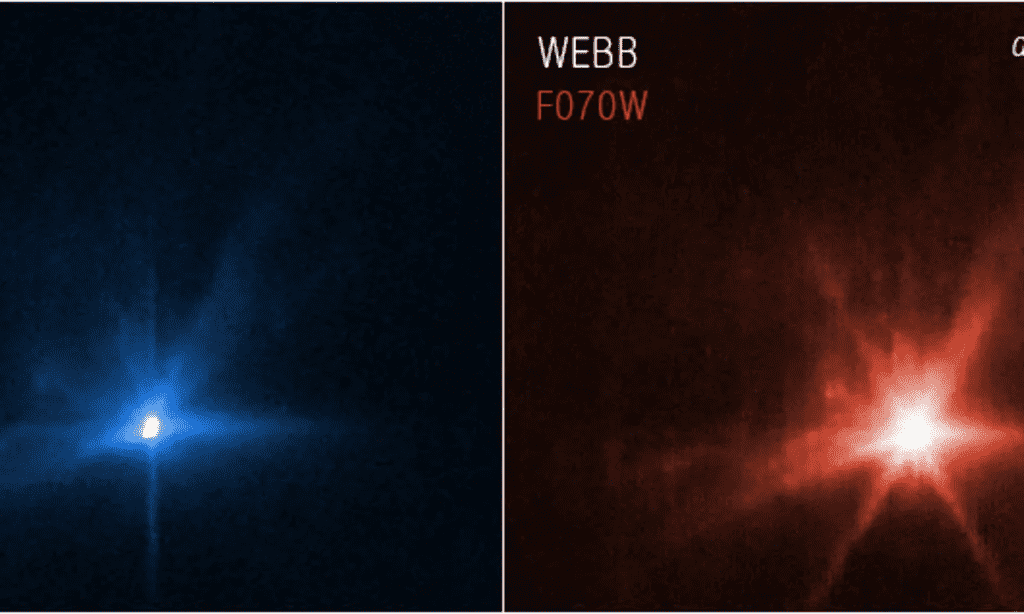NASA has recently made some tweaks to the recipe and smashed its Double Asteroid Redirection Test (DART) spacecraft with a tiny asteroid moonlet known as “Dimorphos”. The practice has been done in order to anticipate the nature of destruction caused by the collision between the two and if DART would be able to change the flight path of the asteroid or not. Consequently, this enormous collision surpassed all projections and created a gigantic landscape of space debris. It should be noted that the images of the collision were captured by both the observatories on the ground and in space, and it is just an uncanny sight to behold.
Coupled with this, in order to get a clearer insight, a team of researchers in Chile have used a Southern Astrophysical Research (SOAR) Telescope, and the images captured from this telescope reveal that a series of gigantic clouds made of space debris have been liberated from this tiny asteroid moonlet. Hence, this test conducted by NASA left marks of destruction that were 6,000 miles long. Teddy Kareta, who is an astronomer at the Lowell Observatory in Arizona, who produced the new image, said, “It is amazing how clearly we were able to capture the structure and extent of the aftermath in the days following the impact.”
Not to mention, along with the 1,345 pounds spacecraft of NASA, another state-of-the-art technology known as the Light Italian CubeSat for Imaging of Asteroids (LICIACube), captured the images of the devastating collision as well and hence, made great strides. On the other hand, NASA Administrator Bill Nelson expressed his views in a statement issued recently and said, “For the first time, Webb and Hubble have simultaneously captured imagery from the same target in the cosmos: an asteroid that was impacted by a spacecraft after a seven-million-mile journey.”

To that end, this recent test has opened a door to new opportunities for scientists to further study the impacts of this collision and gather any important insights relating to this matter. Similarly, Katarina Miljkovic, who is a planetary scientist, quoted, “From this one impact event, we can learn more about the mechanics of impacts into small bodies, momentum transfer, and the ability to use artificial impactors to nudge asteroids out of their orbits. Now the science can start.”
https://news.google.com/__i/rss/rd/articles/CBMikwFodHRwczovL3dvbmRlcmZ1bGVuZ2luZWVyaW5nLmNvbS90aGVzZS1uZXctcGljdHVyZXMtb2YtdGhlLXRyYWlsLW9mLWRldmFzdGF0aW9uLWxlZnQtYmVoaW5kLWZyb20tbmFzYXMtYXN0ZXJvaWQtY29sbGlzaW9ucy1sb29rLWFic29sdXRlbHktYW1hemluZy_SAZcBaHR0cHM6Ly93b25kZXJmdWxlbmdpbmVlcmluZy5jb20vdGhlc2UtbmV3LXBpY3R1cmVzLW9mLXRoZS10cmFpbC1vZi1kZXZhc3RhdGlvbi1sZWZ0LWJlaGluZC1mcm9tLW5hc2FzLWFzdGVyb2lkLWNvbGxpc2lvbnMtbG9vay1hYnNvbHV0ZWx5LWFtYXppbmcvYW1wLw?oc=5
2022-10-09 13:26:15Z
1591965161
Tidak ada komentar:
Posting Komentar